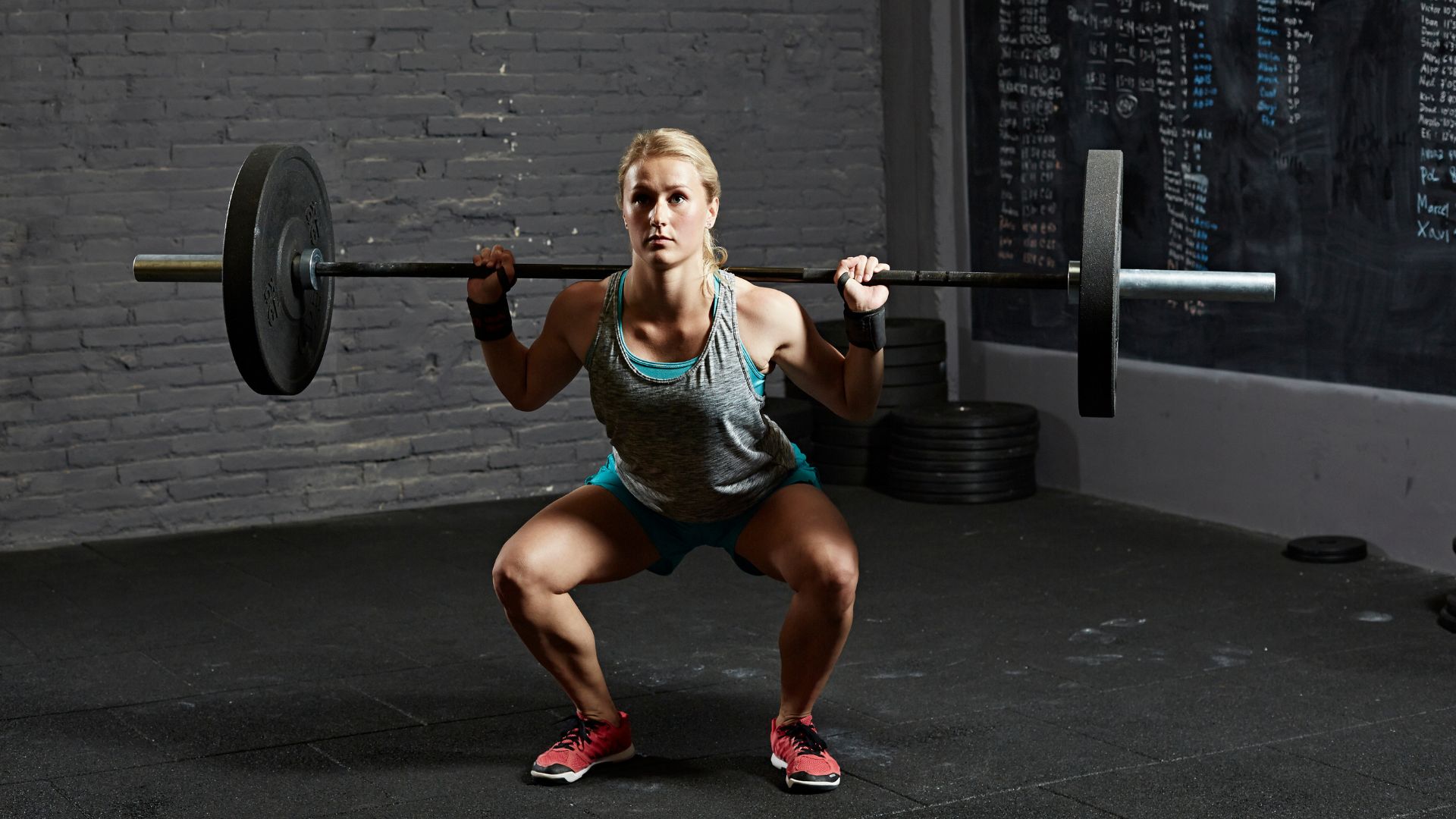
Whether it’s building a bigger booty, or growing your legs, squats usually get all glory. After all, it is one of the best compound exercises out there for your lower body. But if you’re prone to knee pain, then this strength exercise may not be the best for you.
According to Steve Chambers, Gym Manager and Certified Personal Trainer at Ultimate Performance there’s lots of reasons why your knees may be suffering while you squat, such as poor form, joint imbalances, weak glutes causing your knees to cave inwards, ego lifting, or it can even be down to your actual body composition. For example, having a short torso and long femur can cause you to lean forwards when you squat, placing pressure on your knees.
Unless you’re a powerlifter or athlete you don’t actually need to squat and there’s plenty of alternative exercises out there that, aren’t just a lot more gentle on your knees, but still deliver great results too. (Although, if you’re experiencing consistent pain you should get your knees checked out.) Below, Steve shares his five of his favourite squat alternatives for bad knees.
1. Step ups

Muscles targets: Quads, glutes, inner thighs and calves
"Step ups are a really effective move to practice keeping your hips in line, and your posture upright, all of which will increase stability in your knees," explains Steve. "It’s a highly metabolic exercise, but because of where your weight is distributed in relation to your knees, you are not putting excess pressure through your joint capsules." You can also perform it with just your bodyweight, a pair of dumbbells, or a barbell.
How to:
- Stand in front of a platform (a weight bench, chair, anything stable) with your feet shoulder-width apart
- If you’re using dumbbells, hold one in each hand with your palms facing inwards, if you're using your bodyweight place your hands on your hips
- Step up onto the platform using your front leg, resisting the temptation to push up off your back leg
- Once you have fully straightened your front leg, bring your back leg forwards onto the platform
- Pause briefly and then step backwards with your back leg to return to the start position
- Keep your front foot in position for the full set.
- Repeat for the desired number of reps and then switch sides.
2. Dumbbell Romanian deadlifts
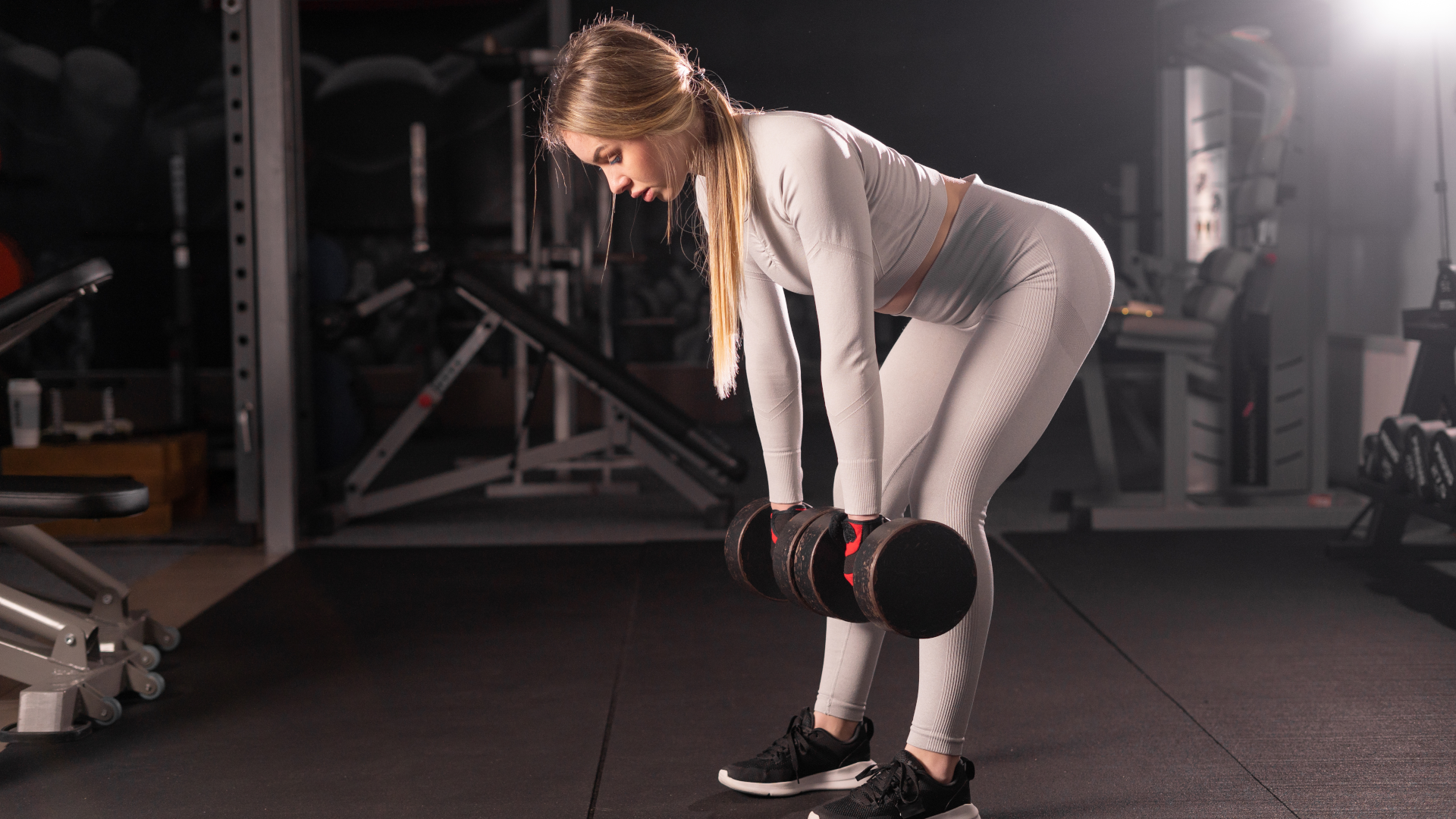
Muscles targeted: hamstrings, glutes (gluteus maximus), lower back, upper back
"Unlike a traditional deadlift or a squat, a Romanian Deadlift does not involve any significant bend in your knees," says Steve. "It’s a hip hinge movement that will really increase your strength and size in both your glutes and your hamstrings. If you suffer from mobility or flexibility problems that make a traditional squat painful in your knees, this is a super effective exercise to try."
How to:
- Stand upright holding a dumbbell in each hand with an overhand grip and place them in front of your thighs
- Look at the floor in front of you, push your hips backwards and bend forward hinging at the hips
- Keep your back straight and pull the dumbbells into your body to prevent them from drifting away from you
- Lower the dumbbells as far as possible until you can go no further without the lower back rounding or the knees moving.
- Pause for a moment in the bottom position and drive your hips forwards and squeeze your glutes to return to the start position
3. Machine leg press
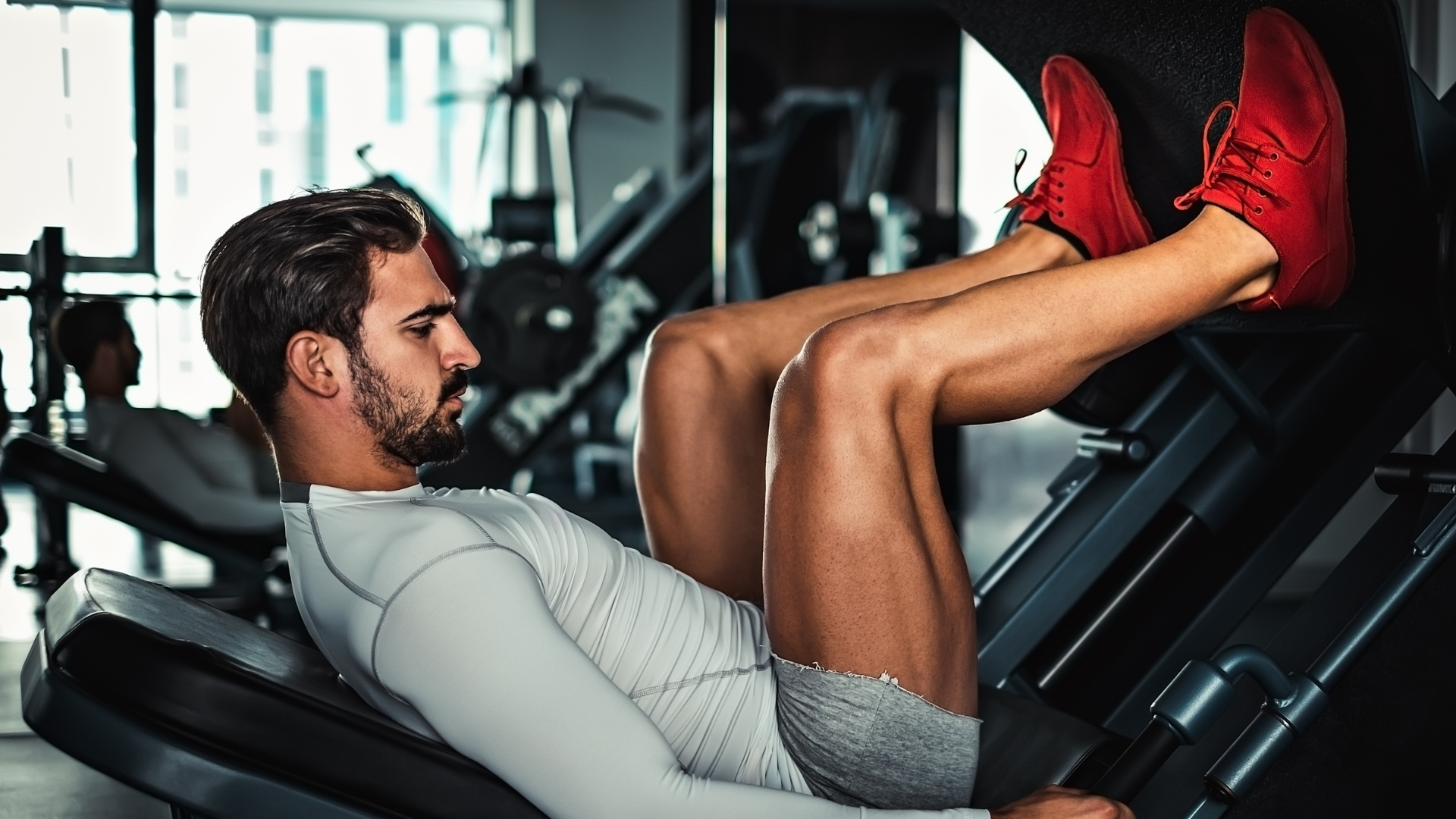
Muscles targeted: Quadriceps, glutes (gluteus maximus), inner thigh (adductor muscle group)
"Machine leg presses are a really effective way to increase your lower body strength and improve your overall knee health," says Steve. "A lot of people, particularly if they have existing injuries or pain, find fixed machines easier on their joints than free weight exercises because, in general, they require less skill and control to master."
How to:
- Load the weight plates onto the machine/set the pin to the desired weight and set the safety stop in the right position for your range-of-motion
- Sit down on the machine and place your feet on the platform, shoulder-width apart for a more quad-dominant focus
- Position your feet at a level that is comfortable for your ankles (so that your feet remain in full contact with the foot plate at all times).
- Grip the handles firmly and pull yourself down into the seat.
- Straighten your legs to take the weight off the racks, your knees should be slightly bent not locked out
- Start the movement by lowering your legs to bring your knees towards your chest
- You have reached the end of your range-of-motion when you cannot lower your legs any further without your heels lifting or buttocks lifting off the seat
- Pause for a moment at the bottom position, keeping tension in your legs
- Press both legs into the platform, through the foot, to return to the start position
4. Hip thrusts
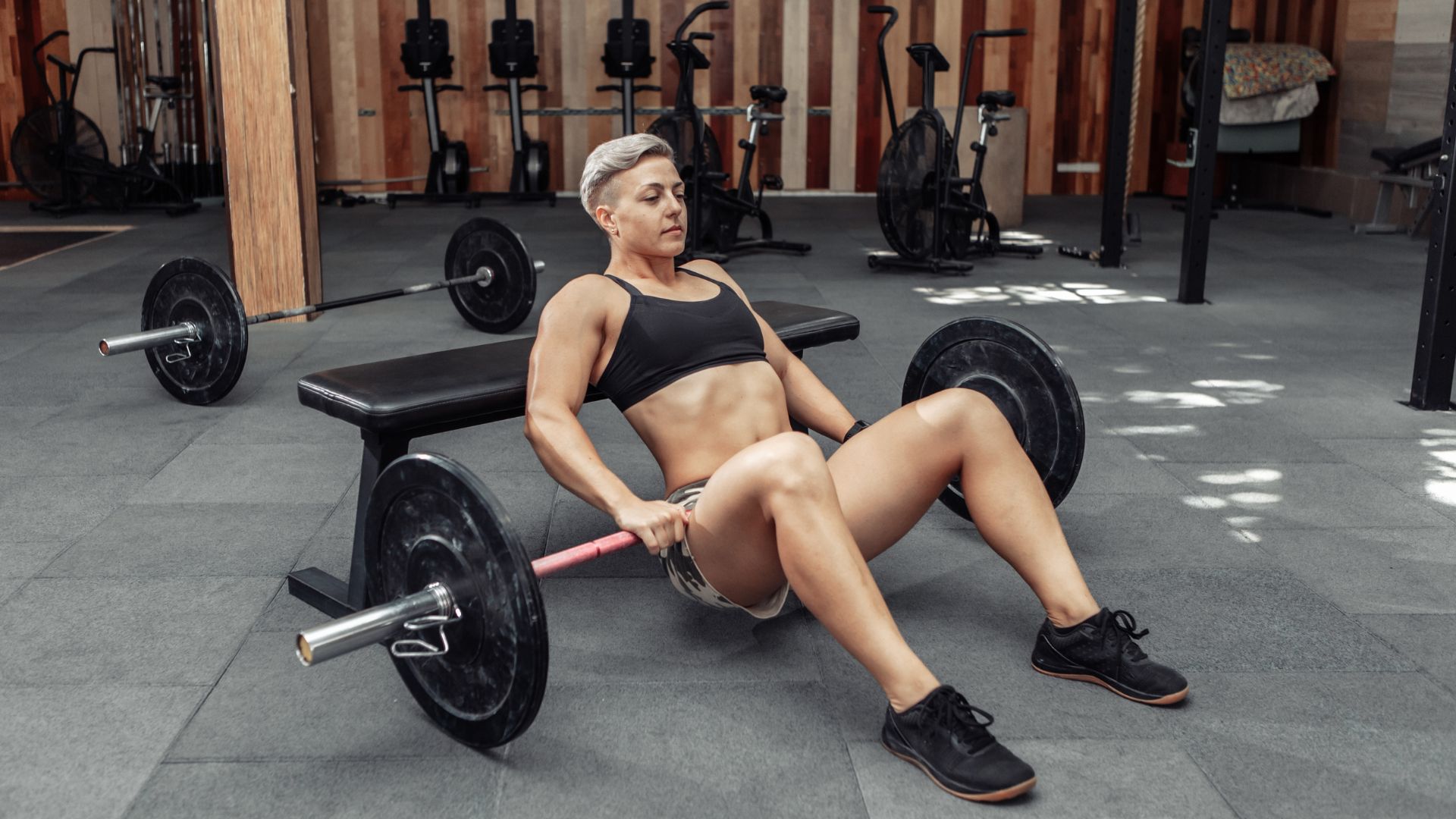
Muscles targeted: Glutes (gluteus maximus), hamstrings, quadriceps and lower back
"A big reason why people struggle with knee pain is due to weak glutes and hip thrusts are a great way to really develop the gluteus maximus," says Steve. They don’t require you to put your knees under any sort of excess or undue pressure during the exercise either." Again, these are another versatile exercise that can be performed with either weights, or no weights.
How to:
- If you're performing these at home you can lean against your sofa, if you're doing them at the gym you can use a hip thrust bench
- Leaning your upper back against your chosen piece of equipment, tuck your feet in towards your buttocks and keep your feet roughly shoulder-width apart
- Drive your hips upwards towards the ceiling, pushing through your heels and squeezing your glutes, keeping your knees in line with your toes
- In the top position, your hips should be fully extended and your torso parallel to the floor
- Pause for a moment and focus on contracting your glutes then lower your hips down towards the floor
- Repeat for the desired number of reps
5. Lying leg curls
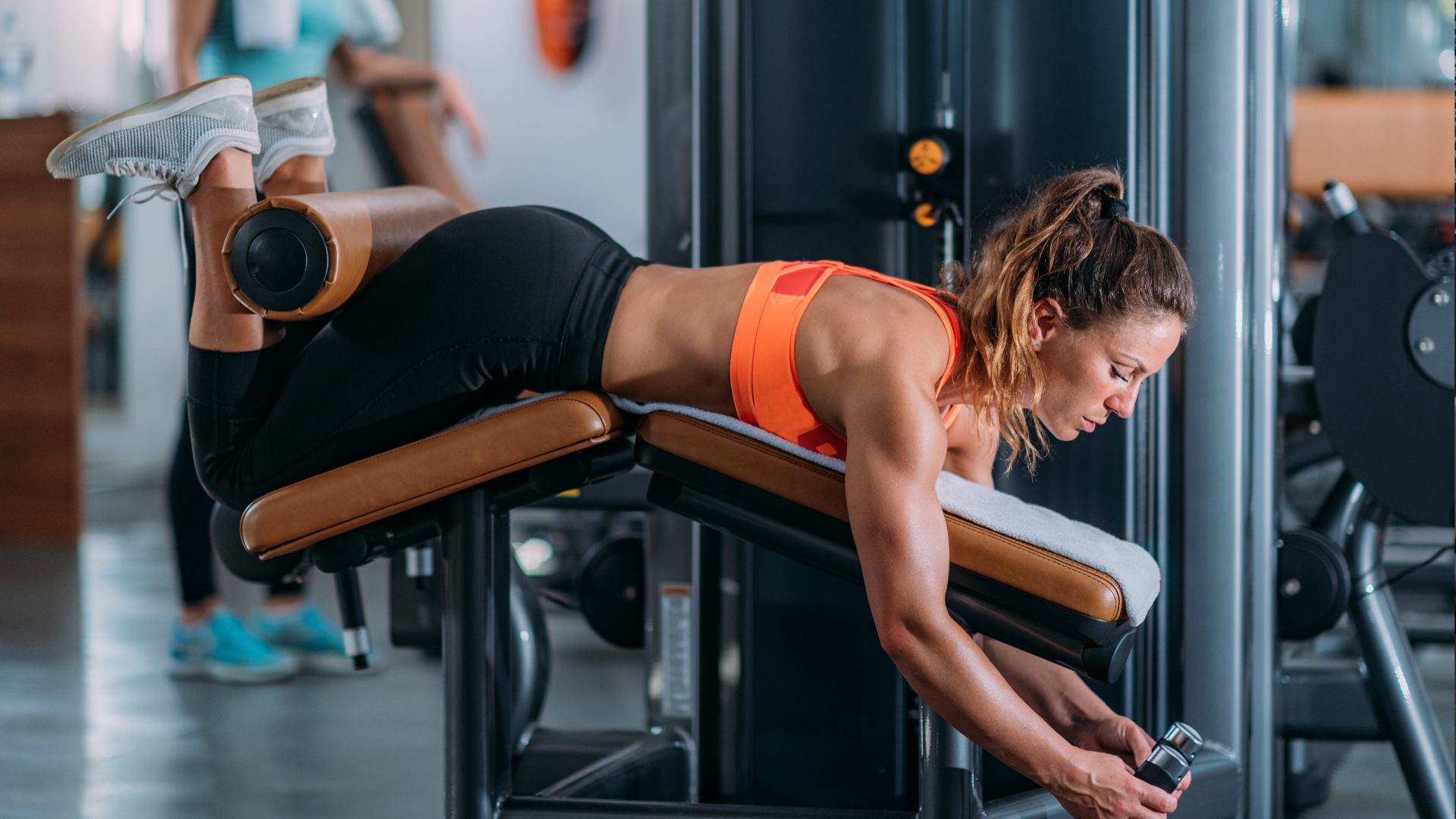
Muscles targeted: hamstrings
"This is another machine-based exercise, and one which primarily targets the hamstrings in a similar way to a squat, but putting less pressure on the knees," says Steve. "The hamstrings help stabilise the knee and hip joint, which is vital for preventing injuries. The lying hamstring curl machine achieves superior hamstring recruitment because the quads are fixed and the hamstrings can move freely through their range of motion."
How to:
- First set yourself up on the leg curl machine:
- Push your thighs down into the and curl your legs up towards your buttocks
- Avoid ‘swinging’ the weight as your feet near your buttocks, the movement should be slowest as this is the shortest and weakest position
- You have reached the end of your range of motion when your knees are fully bent or you cannot move any further without your hips or thighs lifting off the pad
- Pause for a moment and focus on squeezing your hamstrings
- Reverse the motion, slowly and controlled, back to the start position







